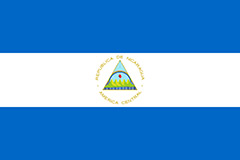2 June 2014

The Solutions Center recently assisted Nicaragua by providing a policy gap analysis and recommended strategies for delivering clean power to rural and remote populations. As a result, Nicaragua’s renewable energy law is being modified and the country is considering different rural electrification approaches.
When Julio Pérez, Director, Alternative and Renewable Energies Directorate for the Ministry of Energy and Mines of Nicaragua, asked the Solutions Center to provide assistance in strengthening the country’s renewable energy policy framework, a shift was occurring in Nicaragua’s renewable energy focus.
Historically, Nicaragua’s renewable energy policy had focused on tapping into the country’s significant hydropower potential. But with costs decreasing for other renewable energy technologies, Nicaragua became interested in supporting investment in wind, solar, geothermal power, as well as biomass and biogas.
The country’s aggressive National Development Plan calls for 94% of its electricity to be supplied by renewable energy sources by 2017. While hydro, wind and geothermal projects underway are expected to achieve this target, questions still remain over how to better support renewable energy development in Nicaragua.
At the time of Pérez’s request, Nicaragua also needed to create a better regulatory framework to support renewable energy development in rural and remote regions to achieve the country’s target of between 95% and 100% electricity access by 2020. The current electricity access rate is approximately 74%, and many communities that have access continue to rely on expensive diesel fuel.
Pérez’s request to the Solutions Center came in two parts. The first request was to suggest different approaches for accelerating renewable energy development in rural and remote regions. The second was to conduct a policy gap analysis of Nicaragua’s current renewable energy law (Ley 532). The current law does not have adequate regulatory support for non-hydro-based renewable energy development, nor does it provide regulatory structures important to grid operators, investors, developers, and project operators.
In response to these requests, the Solutions Center began by collaborating with IRENA through the Renewable Energy Policy Analysis Network (REPAN) and a Renewables Readiness Assessment (RRA)—a stakeholder-driven analysis of the country-wide conditions for clean energy development and deployment.
“The RRA we conducted in Nicaragua was more than a workshop—it was a high-level roundtable that involved a detailed discussion among people from the developer community, government and lawyers to kick-start the renewable energy industry process,” said Toby Couture, a clean energy policy expert who provided assistance to Nicaragua on behalf of the Solutions Center. “It was a big event, with six major working groups of between eight and twelve people—as well as interested citizens and others involved in the renewable energy industry in attendance.”
Couture’s role during the RRA was to provide a global perspective on how other countries have solvedsimilar challenges and to identify policy solutions.
“It’s useful to go and meet with ministry representatives, see the presentations from government and industry, and get first-hand insight into local challenges and market development,” he said of the RRA process. “This enables the Solutions Center to provide targeted, context-based assistance, coming from the real challenges these countries are facing on the ground.”
After returning home from the workshop, Couture analysed different approaches to rural electrification and drafted a gap analysis report for the Ministry of Energy and Mines. This report will enable Nicaragua to identify strategies to deliver clean power to populations without energy access in rural and remote locations of the country. The gap analysis also provided recommendations for creating rules governing forecasting requirements for renewable energy project operators, developing power purchase agreement provisions and standard contracts to decrease transaction costs, mapping existing substations, and clarifying existing tax laws.
“The Solutions Center’s tailored assistance was designed to quickly and directly respond to the country’s pressing issues of rural electrification and rewriting renewable energy law,” Couture said of the results. “This kind of rapid response is just what many countries need.” The report concludes that with appropriate policy mechanisms, Nicaragua will be able to increase its total share of renewable energy in the country’s electricity mix.
“The Clean Energy Solutions Center provided helpful policy assistance within the IRENA Renewable Readiness Assessment process, helping Nicaragua identify key gaps in its renewable energy policy framework and the current national strategy for rural electrification," Perez said.
